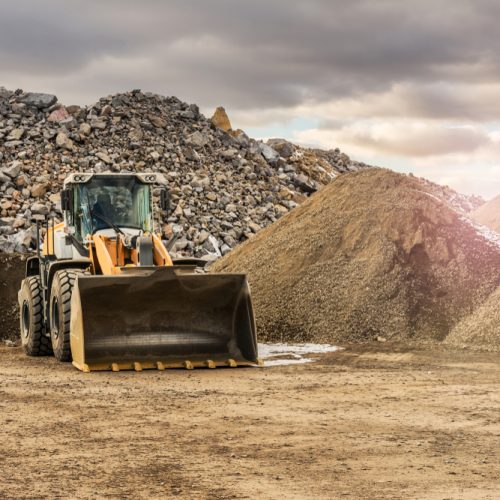Navigating the Aggregates Levy: What You Need to Know
The aggregates levy (AGL) is a UK tax on the commercial exploitation of rock, sand, and gravel. Designed to encourage the responsible use of natural resources, it was first introduced in 2002. The levy is applicable to businesses involved in quarrying, manufacturing, or the commercial production of aggregate material.

Navigating challenges and opportunities
While the aggregates levy has made significant strides in promoting sustainable practices, challenges remain. Some critics argue that the levy could lead to increased construction costs, which might be passed on to consumers. However, proponents counter that the long-term environmental benefits outweigh these potential short-term costs.
For the aggregates industry, the levy also presents opportunities for innovation. Companies that invest in research and development of more efficient extraction, processing, and recycling techniques can position themselves as industry leaders while contributing to a greener future.
Key objectives and benefits
01
Environmental Conservation
One of the primary goals is to encourage the aggregates industry to adopt more sustainable extraction methods. By imposing a tax on the extraction of these resources, companies are incentivised to explore alternatives, such as recycling and using secondary aggregates, thereby reducing the environmental footprint.
02
Revenue Generation
The revenue generated is channeled into supporting various environmental initiatives, such as habitat restoration, land reclamation, and local community projects. This creates a positive feedback loop where the revenue generated directly contributes to mitigating the environmental impacts of extraction.
03
Promoting Recycling
The levy encourages the use of recycled aggregates, which are derived from construction and demolition waste. This not only reduces the demand for virgin aggregates but also diverts waste from landfills, promoting a circular economy.
04
Market Dynamics
The levy has led to shifts in market dynamics, favouring suppliers of recycled and responsibly sourced aggregates. This encourages healthy competition and rewards companies that align with sustainable practices.
05
Climate Impact
By curbing the demand for virgin aggregates, the levy indirectly reduces carbon emissions associated with extraction, transportation, and processing. This aligns with broader climate goals and carbon reduction strategies.
Book a meeting
Book a free, no-obligation chat with our experts where we find out a bit more about your business, explain our services, and how we could work with you.
Get in touch
Whether you have a clear goal in mind or are open to exploring possibilities, we’re at your service to assist you.
How we can help
As businesses face the challenges posed by policies like the Aggregates Levy, our team of specialists stands ready to guide you through the intricacies of compliance, optimisation, and strategic financial management.
- Compliance Made Effortless: Our experts ensure accurate calculation, timely filing, and adherence to all aggregates levy regulations. Never worry about penalties or legal complications again.
- Tax Optimisation Strategies: We analyse your financial landscape to identify opportunities for reducing tax liabilities while maintaining compliance.
- Strategic Financial Planning: Our specialists help you incorporate the aggregates levy into your financial projections, enabling effective resource allocation, cash flow management, and business growth planning.
- In-Depth Cost Analysis: Understand the true financial implications of the aggregates levy on your operations. Our experts conduct comprehensive cost analyses to guide your decision-making and pricing strategies.
- In-Depth Cost Analysis: Understand the true financial implications of the aggregates levy on your operations. Our experts conduct comprehensive cost analyses to guide your decision-making and pricing strategies.
- Precise Record Keeping: We ensure your records are accurate, up-to-date, and ready for reporting whenever needed.
- Audit Support and Defence: In the event of an audit or review, our team provides the necessary documentation, explanations, and expertise related to the aggregates levy, ensuring a smooth process.
Contact our specialists
FAQs
The aggregates levy is a tax imposed on the commercial exploitation of primary aggregates, such as sand, gravel, and crushed rock, extracted in the United Kingdom. It was introduced to encourage more sustainable extraction practices and reduce the environmental impact of aggregate extraction.
Businesses or individuals that commercially extract, process, or sell taxable aggregates in the UK are generally liable to pay the Aggregates Levy. This includes quarry operators, construction companies, and anyone involved in the supply chain of taxable aggregates.
Primary aggregates refer to naturally occurring materials such as sand, gravel, and crushed rock that are extracted directly from the ground and used in construction, manufacturing, and other industries.
No, certain exemptions and reliefs apply. For example, aggregates used for agricultural, landscaping, or restoration purposes might be exempt from the levy. Additionally, there are lower rates for some types of aggregate use, such as aggregate used in road construction.
The levy is calculated based on the weight of taxable aggregates removed for commercial purposes. The rate of the levy can vary depending on factors such as the type of aggregate and its intended use.
The Aggregates Sustainability Fund (ASF) was established to allocate a portion of the levy revenue to support projects that enhance the local environment, communities, or areas affected by aggregate extraction. This fund helps mitigate the negative impacts of extraction activities.
The levy is typically collected at the point of removal when the aggregate is extracted from the ground. Quarry operators or individuals responsible for the extraction are required to register with HMRC and submit regular returns indicating the amount of aggregate removed and the applicable levy.
The revenue generated from the levy contributes to government funds and initiatives. A portion goes to the ASF for supporting environmental and community projects, while the rest becomes part of the general tax revenue used to fund public services and government activities.
Yes, there can be penalties for failure to comply with the Aggregates Levy regulations. Penalties may include fines, interest on late payments, and legal actions.
Yes, the rates and regulations related to the Aggregates Levy can be subject to changes through legislation or government policies. It’s advisable to stay updated on official sources to be aware of any modifications that might affect your operations.





